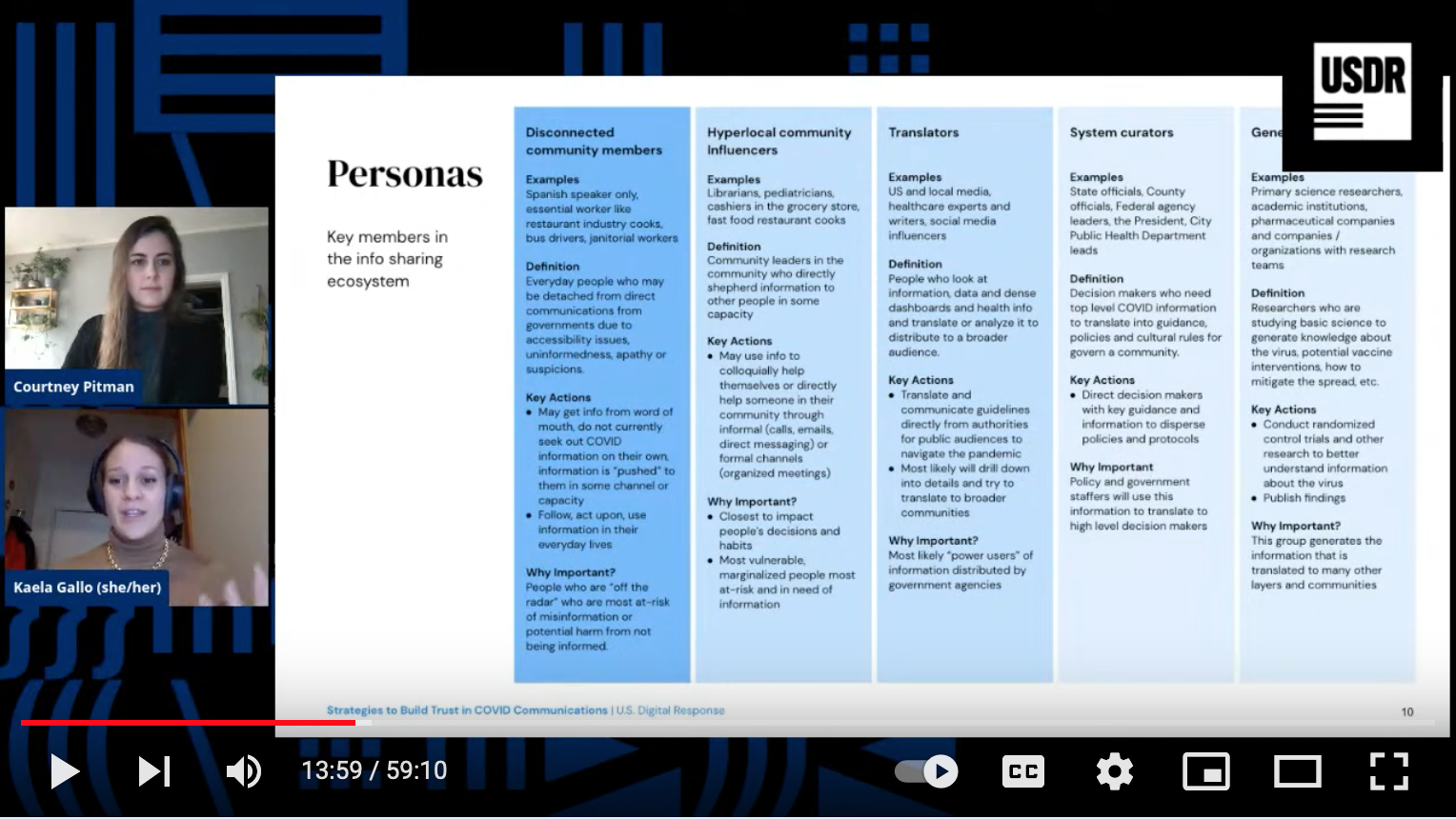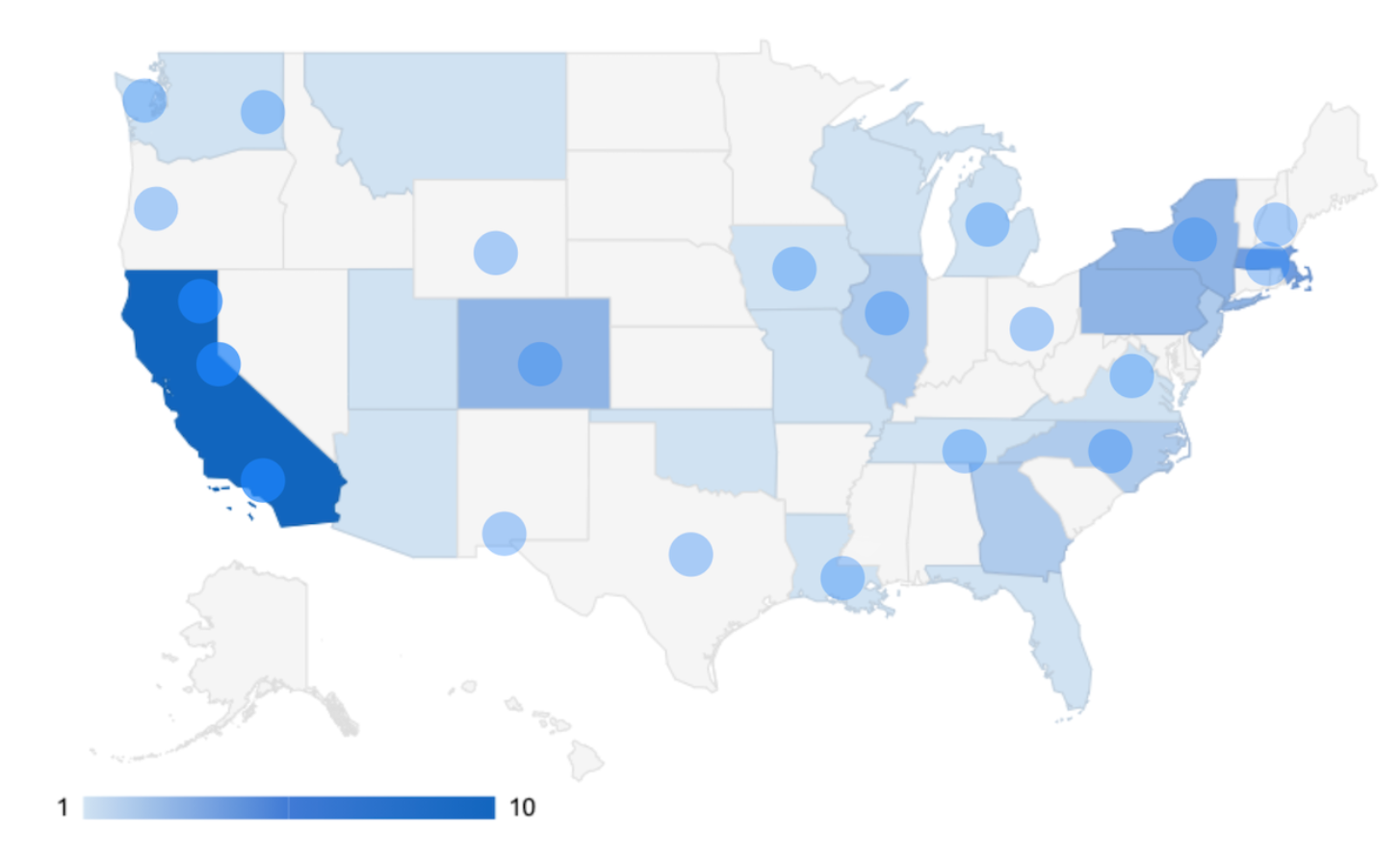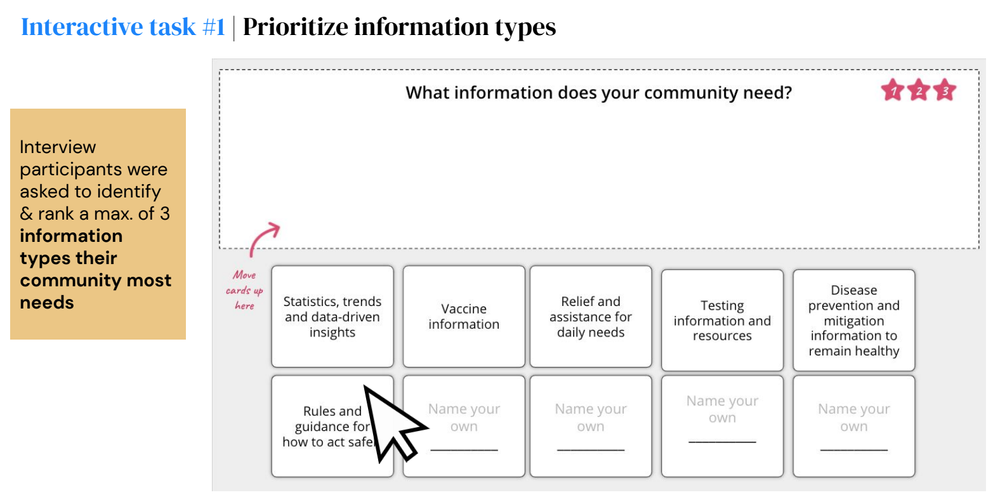CASE STUDY
COVID Communications
Nov 2020 - Jan 2021
U.S. Digital Response
Role: Co-project lead, User researcher
Team
Stephanie Nguyen, Courtney Pitman, Angie Im, Adam Little, Shipra Kayan, Lorri Nault, Raphael Lee, Zuzana Love, Amulya Aradhyula, Rebecca Sinclair
About the Organization
U.S. Digital Response (USDR) is a non-profit, non-partisan organization that helps governments, nonprofits, and public entities respond quickly to critical public needs. They activate highly-skilled volunteer talent build elegant, scalable solutions with technology for federal, state, and local government entities as well as non-profits.
Context
Almost a year into the COVID-19 pandemic, a team of volunteer researchers from USDR set out to investigate the challenges of effectively sharing COVID-related information with local communities.
We conducted two nationwide qualitative and quantitative research sprints to explore:
how individuals and at-risk and vulnerable communities receive critical COVID information
how trusted community leaders or “translators” can amplify and extend the reach of government messaging.
The goal of the research was to inform decision-making and planning for creators of COVID communication strategies at all levels of government, provide a framework to think about and prioritize key information, and share what everyday Americans have to say about navigating COVID information.
Goals and Intent
Impact
We presented our findings to over 50 individuals from the government, non-profits and the public in a live webinar in Jan 2021.
The research and the presentation increased inbound requests to US Digital Response for partnerships and garnered appreciation from federal, state, and local COVID communication creators.
Methods
30-60 min one-on-one semi-structured remote interviews
85 interviews were conducted across two sprints in November and December 2020.
Quantitative landscape review
Interactive usability tasks
We used interactive exercises and asked participants to react to existing websites to dig into participant perspectives and needs.
One field survey
Selected Findings
It became clear in the first round that there are distinct patterns in how and through whom information about COVID flows.
Our team identified key personas of people who create, share, and consume COVID information.
We found that in communities receiving information, an increasing distrust created a disconnect from the information that is most trusted versus the information that is most accessible.
A person might see their doctor once or twice a year, but they see social media many times throughout each day. Even though few trust it, social media’s frequency and accessibility makes it the easiest place to find information in a rapidly changing landscape.
This is where the “translators”, the focus of the second sprint, appeared in the first sprint of research. Americans are more likely to trust leaders in their communities than government sources, and 85% of participants we spoke with in the first round of research cited at least one type of translator as a primary source of COVID information.
As critical nodes of communication in the COVID crisis, “translators” (aka trusted community leaders and influencers) interpret rules, target, and share information with the communities they serve.
They use a variety of means to make COVID-19-related information accessible, interpret-able, and usable, which is especially important for the most marginalized.
Ultimately, what makes translators such effective communicators in the COVID-19 pandemic is their ability to reach their communities where they are and speak to them in a way they understand.
Empowered by different levels of influence and decision-making power, translators reach their community in a variety of ways to ensure the information is delivered. The tangential challenges of COVID, such as food insecurity, financial stress, and mental health struggles, were mentioned across interviews and as information that translators were sharing in their communities.
To read the full set of insights, see the full U.S. Digital Response on Strategies to Build Trust in COVID Communications
View other case studies




